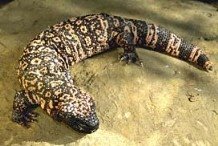 Today is August 6th, the 66th anniversary of the day the crew of the Enola Gay dropped the never-tested “Little Boy” atomic bomb on the city of Hiroshima. That was the day the war between Japan and the United States — which began with the attack on Pearl Harbor on December 7th, 1941 — finally began to end.
Today is August 6th, the 66th anniversary of the day the crew of the Enola Gay dropped the never-tested “Little Boy” atomic bomb on the city of Hiroshima. That was the day the war between Japan and the United States — which began with the attack on Pearl Harbor on December 7th, 1941 — finally began to end.The pilot for that mission was Colonel Paul Tibbets, who had named his B-29 Superfortress bomber for his mother. (Any reminder of home was welcome!) After the war's end, he and others of the Hiroshima mission crew visited the National Atomic Museum (now the National Museum of Nuclear Science and History) a number of times. On one such visit, Tibbets spoke with a writer for the newspaper of the Sandia National Laboratories, a conversation written up for the Sandia Lab News in 1998. He and other surviving crew members later put up an internet page.
The Enola Gay’s mission was flown from Tinian Island. There, the 509th Composite Bomb Group had three weaponeers. These were the men responsible for actually arming the nuclear bombs in flight and making sure they would operate as designed when they were dropped from the B-29s. I met one of these three, Leon Smith, many years later. By a flip of the coin, the other two weaponeers flew on the missions to Hiroshima and Nagasaki. Smith would probably have flown on the atomic bomb mission to Tokyo had that mission been necessary, but flew on the post-war test at Bikini Atoll instead.
Smith was asked by a Japanese documentary film crew (including three individuals from Hiroshima) a number of years later how he felt when the atomic bomb was dropped on Hiroshima. He recounted his response as follows:
I pointed out there had been a long war — intensive battles starting in the South Pacific, moving ever northward toward Japan. I talked about the 30,000 Japanese soldiers, 20,000 civilians, lost on Saipan. On Iwo Jima, which was roughly halfway to Japan and a fighter base, 60,000 Marines went ashore, and suffered the highest casualty rate they’d ever suffered in any Marine operation. The Japanese had 21,000 defenders. 20,000 died. The battle for Okinawa had just been completed at the end of June. There over 100,000 Japanese soldiers died. 125-150,000 civilians.Today is the anniversary of the Enola Gay’s flight to Hiroshima, the anniversary of the day Leon Smith’s relief began.General Marshall believed that defending Japan were 2.3 million soldiers, 4 million navy men, and 28 million armed civilian militia. I said the invasion was scheduled for November of ’45. I thought the casualties would have been simply unreal — beyond comprehension.
I said, “How did I feel when the bomb was dropped? I felt a sense of relief.” I was confident that the war would soon be over. That I could go back and see my wife whom I’d seen very little since our marriage in 1941. The U.S. and its allies could go back to their homes and their families. And the Japanese could go back to their families. Yes, I felt a sense of relief.
More information on the atomic bombs and their use in 1945 to end World War II can be found in Nuclear History, as well as in a number of other sources. Separate parts of the “Nuclear History” article deal with Hiroshima, Nagasaki, and the earlier Trinity nuclear test in New Mexico.


No comments:
Post a Comment